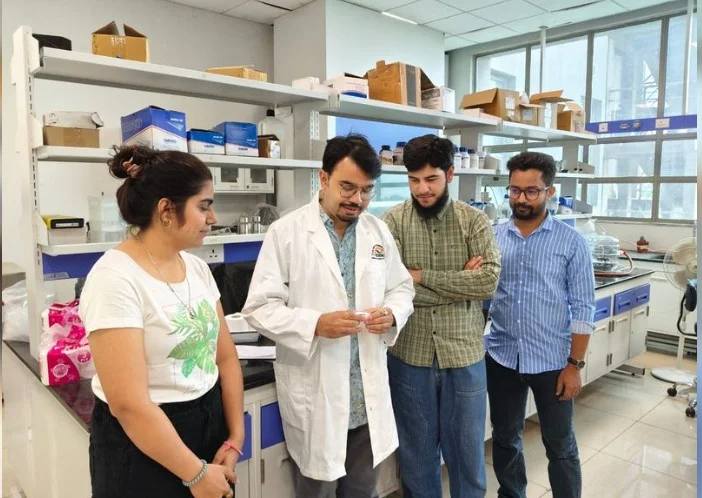MOHALI, July 4: For eco-friendly water purification, scientists at the Institute of Nanoscience and Technology (INST), Mohali, have developed the country’s first smart, biodegradable water filter capable of not just removing toxic dyes from industrial wastewater but also breaking them down using sunlight and mechanical vibrations.
The innovation—led by Dr. Aviru Kumar Basu and executed by research student Manshu Dhillon and team—has been featured as the cover art in the journal Nano Energy (Elsevier Impact Factor: 17.1). The team’s work marks a significant stride in sustainable water treatment technologies, particularly for dye-polluting industries such as textiles, leather, and pharmaceuticals.
“This smart filter uses a 3D-printed biodegradable polylactic acid scaffold coated with Bismuth Ferrite (BiFeO₃),” said Dr. Basu. “It operates on a green principle known as piezo-photocatalysis, which harnesses both sunlight and mechanical energy to initiate powerful reactions that dismantle toxic dyes such as Congo Red and Methylene Blue.”
What makes the device unique is its ability to function even in cloudy weather, driven by ambient mechanical vibrations, making it suitable for year-round deployment in resource-limited and off-grid regions, the researchers added.
Real-time tests yielded impressive results, with the filter removing 98.9% of Congo Red and 74.3% of Methylene Blue within just 60 minutes under combined light and vibration conditions. To validate its real-world efficiency, the team tested it on wastewater from Jaipur’s Sanganer Common Effluent Treatment Plant (CETP), which handles effluents from 192 textile units.
“The device showed high degradation performance under real wastewater conditions, although results varied with daily fluctuations in industrial discharge composition,” said Dr. Basu.
In a novel integration of artificial intelligence, the team employed machine learning techniques, using artificial neural networks (ANNs) to simulate how the filter would perform under diverse conditions. “Our models achieved up to 99% accuracy in predicting catalytic behavior based on factors like light intensity, dye concentration, and vibration levels,” they noted, suggesting these insights can help optimize filter performance in field settings.
The device is not only reusable and low-cost, but also chemical-free, offering a sustainable alternative to conventional dye-removal techniques such as ozonation and electrochemical oxidation, which are energy-intensive and expensive.
Experts believe the scalable innovation could be a game-changer in treating dye-laden effluents, particularly in industries and rural communities still grappling with access to clean water.

